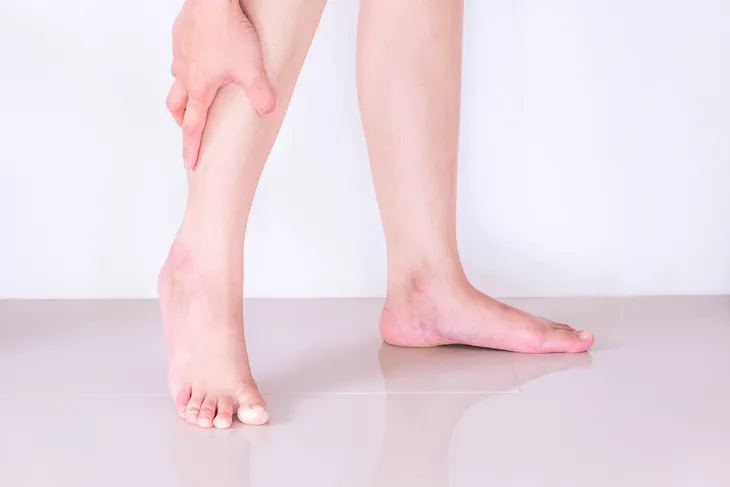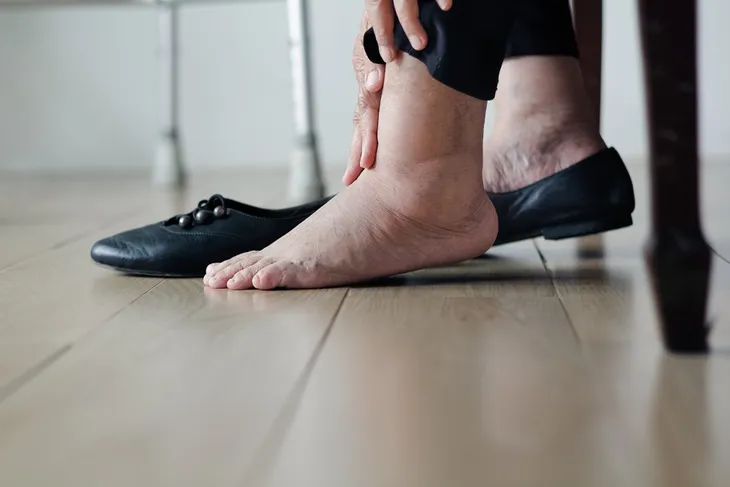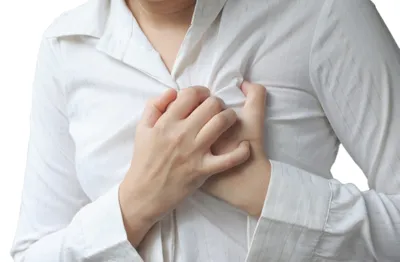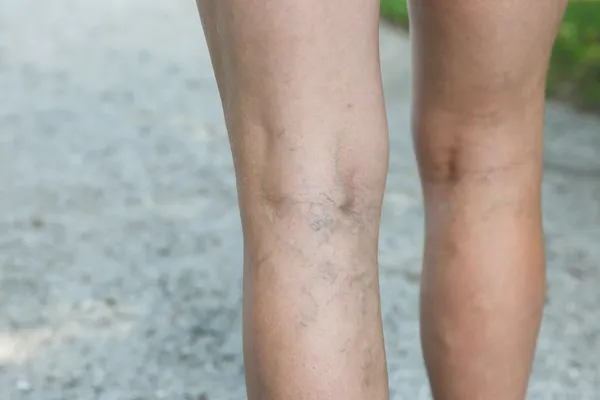They may not sound very life threatening, but a blood clot that develops in the deep veins of your leg, if left untreated and unable to dissolve of its own volition, may detach and travel to your lungs, causing a pulmonary embolism (or PE). Here are 15 signs that you may have a dangerous blood clot in your leg…
Redness
A slight discoloration of the skin in the area of the clot is often one of the first signs of the formation of a thrombus (or clot) deep in a vein. The cause of the skin discoloration is pretty straightforward: dense collections of blood beneath the surface of the skin become visible as they grow in size.
If you experience persistent patches of red skin in the legs, particularly after an injury or surgery, you should bring them to the attention of your doctor. The hallmark of deep vein thrombosis skin redness is that it does not go away over time, or intensifies for no immediately detectable reason.
Swelling
Likewise, painful swelling may occur at the site of the clot, particularly if it develops in the leg, ankle, or calf area. These areas of the body have increased bone and tissue densities, making it more difficult for the body to naturally clear a clot that is already forming.
One of the telltale signs that swelling may be clot-related is that it will not respond to usual treatments, such as the application of hot or cold compresses. The swelling may also intensify for no immediately apparent reason and may occur without external injury to the affected area.
Warm Skin
Blood clotting will often cause a temperature change. In leg clots, the skin near the area may increase in temperature and become warm to the touch. Sometimes, this warm skin also presents as a persistent feeling of heat or tingling in the affected area, which is typically highly localized.
Warm skin is frequently accompanied by other symptoms, including itchiness and throbbing. Like other symptoms, these presentations typically don’t respond well to home remedies and will intensify over time if they are left untreated.
Fainting
Fainting and dizzy spells may occur if the body is unable to dissolve the blood clot naturally on its own or if it detaches and travels towards the lungs. In this case, breathing may become labored. Dizziness may be most pronounced if you stand up suddenly after sitting or lying down, and because of the nonspecific nature of this symptom, many people don’t associate it with the possibility of a blood clot.
Losing consciousness is a serious symptom that should be investigated by a doctor. It also carries the risk of causing serious injury, as you could hit your head or another sensitive part of your body when you faint. Seek immediate medical attention if you pass out.
Increased Heart Rate
As the leg clot grows in size, the body will attempt to eradicate it, and vital organs, like the heart, will work and pump harder, resulting in an accelerated heartbeat. Abnormalities in heart function can also signal that the blood clot has left your leg and traveled to other parts of the body. If so, you’re likely to experience other symptoms, including sharp, stabbing chest pains that intensify with deep breathing.
Increases in your heart rate can also cause psychological symptoms, including anxiety and, in severe cases, panic attacks. If left unchecked, a persistently rapid heart rate can also cause a whole host of other medical problems, so be sure to get checked by a doctor if you detect these symptoms.
Fatigue
Any illness, such as a blood clot, will have the body’s defense systems working overtime, which may result in fatigue or exhaustion. As with many other symptoms of deep vein thrombosis, fatigue can be nonspecific, and its root cause can be difficult to diagnose. Thus, it’s important to be on the lookout for other blood clot symptoms if you’re frequently feeling tired.
The hallmark of blood clot-related fatigue is that you will feel tired for no immediately apparent reason. In other words, you’ll find yourself feeling exhausted even if you haven’t engaged in intense physical activity, and fatigue can occur even if you’re sleeping as much or more than you normally do.
Fever
A blood clot, particularly if it detaches and enters the bloodstream, may cause a low grade or mild fever. In addition to elevated body temperature, the symptoms of fever include sweating or shivering, a persistent headache, body weakness, dehydration and diminished appetite.
In severe cases, fevers can cause additional symptoms, including irritability and mood disturbances, confusion, convulsions or even hallucinations. These symptoms usually occur if the body’s core temperature settles in a very high range, between 103 and 106 degrees Fahrenheit (39.4 and 41.1 degrees Celsius).
Tenderness
Oftentimes the skin surrounding the clot, even though it’s deep within the leg, may become quite tender to the touch with no evidence of bruising on the skin’s surface. The veins below the skin in the affected area may also become visible through the skin, although this typically does not occur until the blood clot reaches a relatively large size.
Note that tenderness may occur in both legs, even if only one leg is affected by the blood clot. This may be because you’re subconsciously favoring your stronger leg, which in turn can trigger muscle and joint strains that subsequently manifest through pain and tenderness.
No Symptoms
Approximately half of those experiencing a blood clot in the leg (or deep vein thrombosis) have little or no symptoms at all. While an asymptomatic blood clot is usually a sign that the thrombosis has not yet reached a serious stage, this isn’t always the case. Even large blood clots that require immediate medical attention can sometimes cause no symptoms at all until the clot dislodges and travels through the bloodstream.
This is one of the reasons it’s important to actively prevent blood clots if you’re at elevated risk. Wear comfortable, loose-fitting clothing, avoid standing or sitting for periods exceeding one hour, lower your salt intake and remain physically active.
Distended Veins
Sometimes, a particularly stubborn blood clot will show itself via distention of the surface veins in or around the area of the leg where it’s developing. You should pay particular attention to this symptom if you aren’t experiencing similar phenomena in other parts of your body.
In most cases, distended veins will not result in complications or problems in and of themselves. However, in cases where a blood clot is putting significant pressure on surrounding blood vessels, internal ruptures may occur and intensified redness or bruising may result.
Foot Pain
Deep vein thrombosis may also cause a person to experience pain in one or both of their feet. Because this symptom doesn’t occur in the leg (the location of the blood clot), they may not make the connection and dismiss it as being caused by something else.
But the reason foot pain occurs is because the blood clot in the leg is restricting or blocking blood flow to the area. As a result, the tissues in the feet aren’t receiving enough oxygen from the blood, which causes pain.
Calf Pain
Having a blood clot in the leg may also cause you to experience pain in your calves. Unfortunately, however, this pain “…can easily be mistaken for a muscle cramp or strain, which is why the issue often goes undiagnosed and is specifically dangerous,” says Luis Navarro, MD, in speaking with Prevention.com.
The source indicates pain from deep vein thrombosis tends to be most noticeable when you’re walking and bending or flexing the foot upward. If you find yourself experiencing these symptoms, especially along with others mentioned on this list, be sure to see a physician immediately.
Skin Discoloration
As mentioned earlier, the hallmark symptom of deep vein thrombosis is persistent redness in the area of the blood clot, but that’s not the only skin discoloration that can occur with this condition. As a result of the blood clot, the extremities—like the ankle or foot—may become pale due to decreased blood flow to the area, in addition to feeling noticeably cooler when touched.
If the blood clot goes untreated, the area may take on a bluish tinge and feel even cooler to the touch, which Livestrong.com says “indicates that blood flow from a blood clot in the leg has become worse.”
Unexplained Cough
In some cases, especially for those who are asymptomatic, it may be hard to detect deep vein thrombosis until the blood clot detaches from the leg and travels to the lungs, causing a pulmonary embolism. A pulmonary embolism can be incredibly dangerous—sometimes fatal—so it’s important to recognize the symptoms.
One such symptom is a persistent, but unexplained cough (as in, it’s not being caused by an infection or other condition). For most, the cough tends to be dry, but some people may cough up phlegm or blood.
Chest Pain and Shortness of Breath
As touched on briefly earlier, a pulmonary embolism may also cause you to experience chest pain. It may feel as though you are having a heart attack, but with a pulmonary embolism, Prevention.com says the pain “tends to be sharp and stabbing, and feels worse when you take a deep breath,” and it is usually exacerbated by each inhalation.
In addition to chest pain, a pulmonary embolism often causes shortness of breath. For some, it may come on suddenly, regardless of whether they’ve been active or at rest, while it may build gradually over time for others.


















